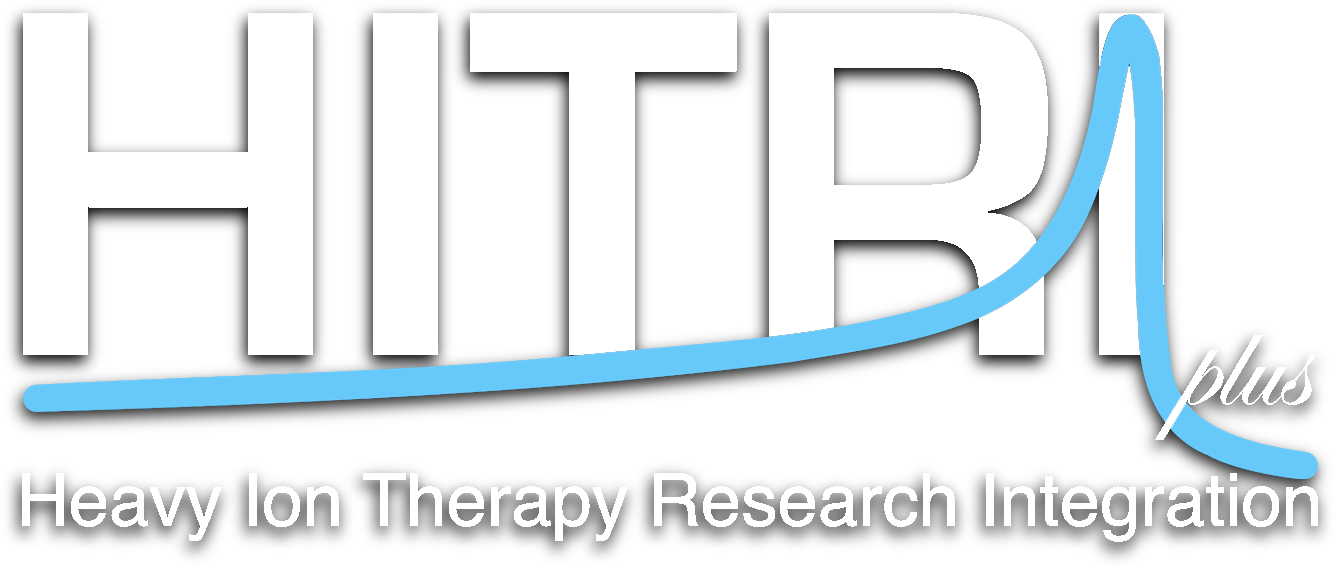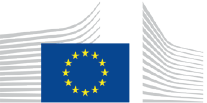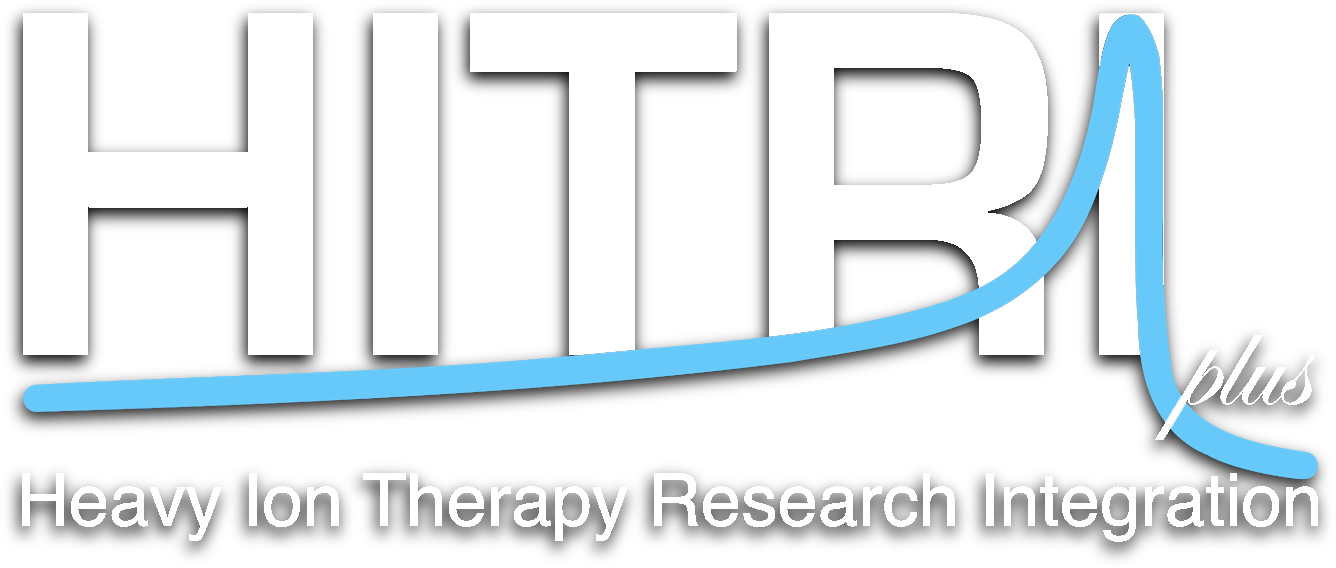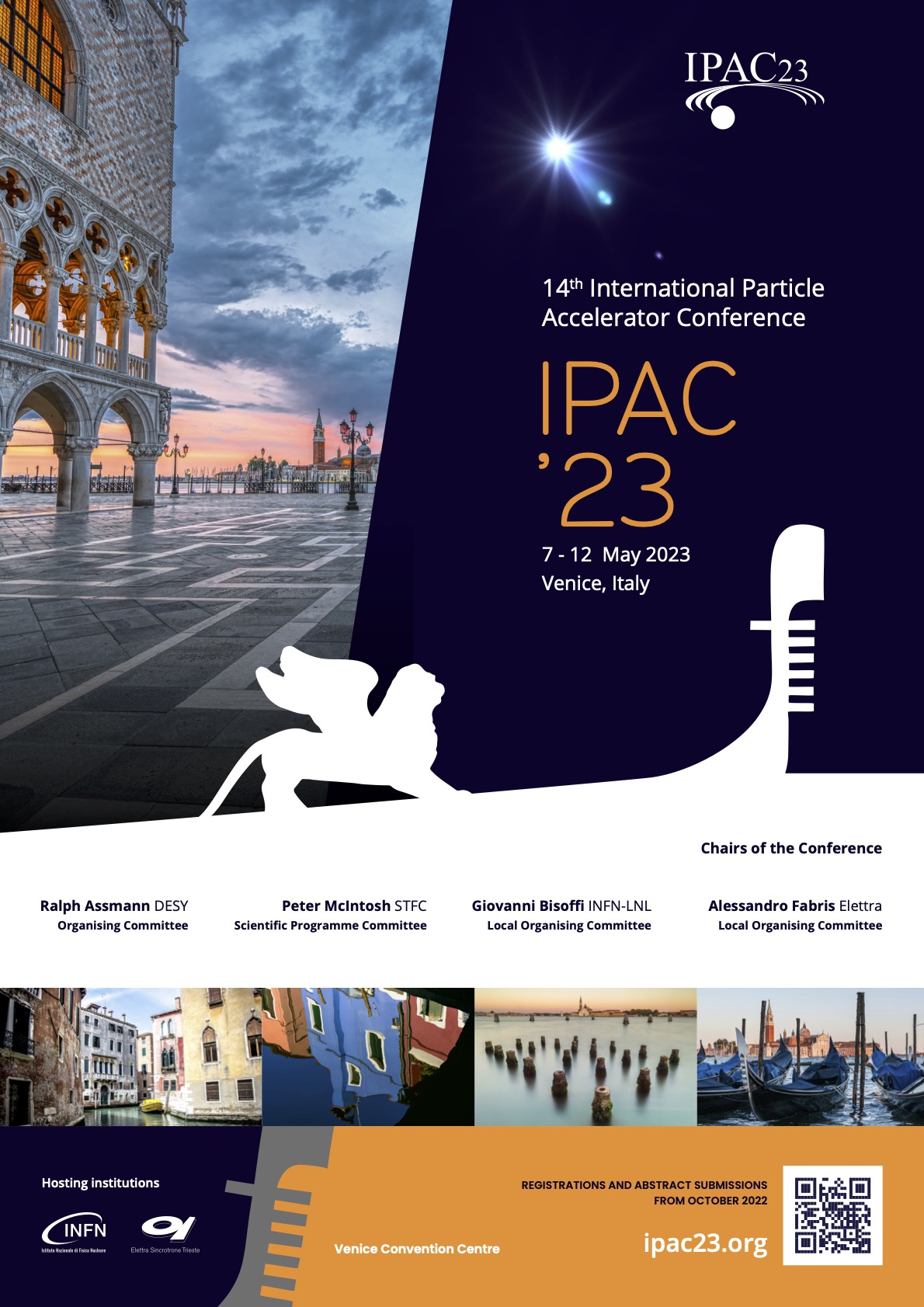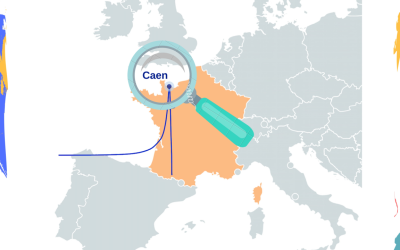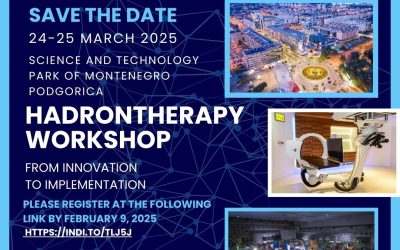The HITRIplus Work Package 7, presented recent achievements in the 14th International Particle Accelerator Conference that took place in Lido of Venice (Italy) from 7 to 12 May 2023. This yearly series of conferences, the main worldwide event for particle accelerators designers, builders, and operators, started in 2009 merging the parallel conferences organised in USA, Europe, and Asia into a large worldwide event that rotates among the three main continents. This year the attractive location near Venice and the complete end of Covid-related restrictions have convinced some 1’700 participants, the largest number ever for an IPAC Conference, to join for a week full of presentations, poster sessions, industry contacts, and parallel events.
For the teams involved in the accelerator designs for HITRIplus (Work Package 7), this Conference was a very valuable opportunity to present recent work and to learn about other projects and initiatives. The Conference organisers contributed by supporting the participation of two HITRIplus Doctoral Students (R. Taylor and L. Nikitovic), who were selected to be among the more than 30 sponsored students.
In terms of scientific production, 5 well-attended posters related to HITRIplus work were presented at the Conference. The related papers are already available on the website of the Conference and will be referenced here.
The first contribution presented by E. Benedetto (SEEIIST) covered the general subject of “Innovation in the Next Generation Medical Accelerators for Therapy with Ion Beams”. Recent years have seen a substantial increase in initiatives to develop new technologies for ion therapy accelerators, which can be divided using a standard approach into incremental, disruptive, and low-tech. Recent incremental work includes the design of the SEEIIST carbon therapy facility and a new helium therapy setup. Although these include innovative features like higher intensity and modern extraction modalities, they are based on standard technologies that can be immediately implemented. Disruptive is considered new technologies based on superconductivities, like the superconductive carbon-ion synchrotron and the low-weight SIGRUM-type gantry, and more unconventional approaches like the high-frequency full-linac, laser acceleration, or Fixed-Field Accelerators. Low-tech but promising can be considered the treatment in a vertical position.
Vretenar (CERN) was the presenter of a contribution signed by many authors from CERN, SEEIIST, PSI, RTU, and some Baltic medical centres, that introduced the “Conceptual Design of a Compact Synchrotron-based Facility for Cancer Therapy and Biomedical Research with Helium and Proton Beams”. This work is the outcome of a study that was conducted over the last two years, for a facility optimised to provide helium beams for research and therapy, as an alternative ion to the standard proton and carbon. Helium has the potential of being a good compromise between the two ions so far licensed for treatment, with the advantage of requiring a synchrotron of only 33-meter circumference. Additionally, this work reviewed the situation of radiation therapy in the Baltic region, a candidate for hosting the facility, indicating that the region offers high-quality medicine to its 6 million people and is well equipped in terms of standard radiation therapy, but lacks any type of particle therapy.
Among the more technical contributions, E. Benedetto (SEEIIST) presented a contribution on “Strongly Curved Super-Conducting Magnets: Beam Optics Modelling and Field Quality” prepared by a large team from SEEIIST, Wigner Research Centre, CNAO, CERN, and University of Manchester. The problem addressed is the fact that usual models to define field quality in superconducting magnets cannot be simply translated to the strongly curved magnets required for ion therapy synchrotrons and gantries. The field has to be described in a curved geometry, applying either the Taylor expansion preferred by optics experts or the Fourier expansion used by magnet experts. Here the field cannot be described by a linear combination of “multipoles”, and the Taylor expansion turns out to be more appropriate. From this analysis also turned out that better fringe field modelling is needed, and that a different beam optics modelling approach will be required for single- and multi-pass magnets.
The last two contributions were related to the design of the HITRIplus linac, an injector to the carbon ion synchrotron at 5 MeV/u that includes two further linac sections for the acceleration of proton and helium ions to 7 MeV/u for isotope production, and of protons up to 10 MeV for injection into the synchrotron. While a linac layout at the frequency of 217 MHz has been already developed by Bevatech and presented at the Linac Conference in September 2022, the two more recent contributions were devoted to developing alternative designs at a higher frequency, 352 MHz. The first linac contribution, presented by A. Mamaras (University of Thessaloniki and CERN) concerned an “Alvarez drift tube linac for medical applications in the framework of HITRIplus project” and included contributions from INFN-LNL and CERN. A complete Drift Tube Linac (DTL) was designed, considering as well permanent magnet design and field breakdown issues related to the mixing of electric and magnetic fields. The resulting beam optics are very clean, while the RF power as usual for DTL structures is high but the relative cost can be mitigated using a high-power klystron with a competitive cost per Watt. The second linac contribution was presented by L. Nikitovic (CERN) and covered a “Comparison of 352 MHz LINAC structures for injection into an ion therapy accelerator”, with additional authors from CERN and RTU. Here the challenge was to design alternative structures to the DTL. A Quasi-Alvarez (QA) with drift tubes equipped with quadrupoles every three tubes, a standard Interdigital-H structure, and a Separated-IH (S-IH) made of 5-gap tanks spaced by quadrupole doublets were considered. It turns out that the 352 MHz frequency is too high for using a standard IH, while both QA and S-IH are feasible at this frequency with a slight advantage for the QA in terms of length and beam optics. The QA optics was optimised, and its power dissipation lies between the 217 MHz IH and the DTL.
In addition to the contributions directly related to HITRIplus, several contributions covered slow-extraction topics that are directly on indirectly related to the ion therapy synchrotrons. A useful summary was prepared by R. Taylor (CERN and Imperial College), who listed the work on mitigation of beam current fluctuation going on in the parallel IFAST EU Project, the investigation of alternative extraction methods carried on at MedAustron proofing of the flexibility provided by their digital RF control system, the optimisation of low-energy slow extraction done at the XiPAF facility in China, the RF-KO extraction at the CERN PS, the multipolar effects on slow extraction exploited at the CERN SPS or computed for the GSI SIS-100, and finally the investigation of slow extraction from Fixed Field Accelerators. The final definition of the HITRIplus slow extraction will profit from this large amount of ongoing work.
